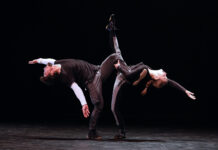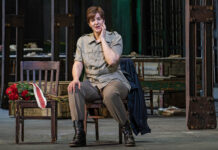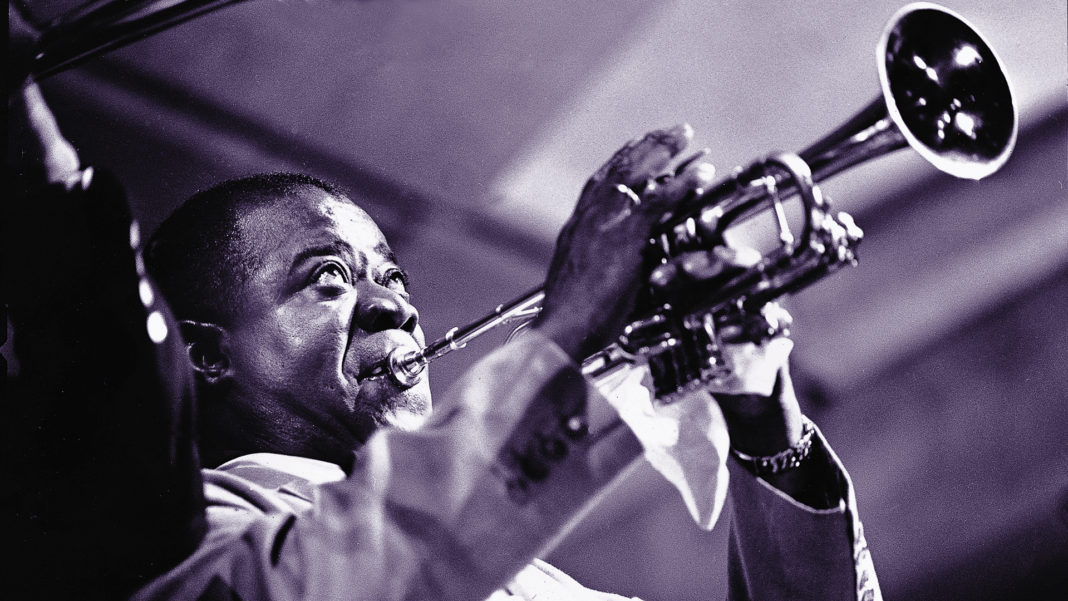Strange as it seems, it truly has been twenty years since documentary filmmaker Ken Burns’ series on that most American of art forms, jazz, first aired on PBS. To celebrate that anniversary the network is re-running the entire series every Thursday night starting January 7th.
Actor Keith David serves as the narrator. Samuel L. Jackson, Delroy Lindo, Derek Jacobi and Harry Connick, Jr. are amongst the additional voices. Footage and interviews with the biggest names in jazz music are incorporated throughout the documentary.
There are ten episodes in Jazz:
Gumbo (Beginnings to 1917) – Airing January 7th
As you would expect with a title like Gumbo, the series begins in New Orleans, a melting pot of a city in the late 1800s and early 1900s that gave rise to Jelly Roll Morton, Buddy Bolden and Sydney Bechet who took that rich brew of culture and began creating what we now call jazz.
The Gift (1917-1924) – Airing January 14th
The period known as the “Jazz Age” plays like a tale of two cities: Louis Armstrong moving from New Orleans to Chicago and Duke Ellington moving from Washington, D.C. to Harlem.
Our Language (1924-1928) – Airing January 21st
In the “Roaring 20s” not only do we follow Armstrong and Ellington, but are introduced to Bix Beiderbecke, Benny Goodman, Artie Shaw and Bessie Smith and famous jazz venues like New York’s Cotton Club.
The True Welcome (1929-1935)- Airing January 28th
The Depression hits, but jazz has taken on a life of its own. With New York as the hub of jazz, Fats Waller and Art Tatum are fast-rising stars; Ellington is writing more serious music and bandleader Chick Webb adds a young female singer to his band by the name of Ella Fitzgerald.
Swing: Pure Pleasure (1935-1937) – Airing February 4th
The Depression is ongoing and people want and need entertainment. They want to dance and swing music offers them exactly what they crave. Benny Goodman becomes the “King of Swing” and Billie Holiday starts to make a name for herself.
Swing: The Velocity of Celebration (1937-1939)- Airing February 11th
The depression finally comes to an end, but the second world war is looming. Swing music loses a little of its momentum until Count Basie and his band enter the scene. By the start of the war in Europe, Coleman Hawkins is creating quite a stir.
Dedicated to Chaos (1940-1945) – Airing February 18th
The United States enters the war and bandleaders like Glenn Miller and Artie Shaw are entertaining folks at home and the troops overseas. Back in New York, with a cabaret tax hitting jazz clubs that have dancing pretty hard, club owners find a way around the tax by embracing ensembles that are smaller and don’t play music that inspires dancing. Be bop is born with artists like Dizzy Gillespie and Charlie Parker.
Risk (1945-1955) – Airing February 25th
The war is over and the cold war is beginning. Amidst it all young artists like Dave Brubeck, Miles Davis and Thelonious Monk are making names for themselves and changing forever the direction of jazz.
The Adventure (1956-1960) – Airing March 4th
Early jazz pioneers are dying off and a new breed is capturing the spotlight: Art Blakey, John Coltrane, Sonny Rollins and Sarah Vaughan. While Davis continues his rise to superstar, Ornette Coleman is experimenting with free jazz.
A Masterpiece by Midnight (1961-The Present) – Airing March 11th
It’s tough to imagine wrapping up what was then 40 years of history in a single episode, but Burns does that in the final episode with the introduction of Dexter Gordon and Wynton Marsalis; the unlikely bumping of The Beatles off the pop charts by Louis Armstrong and the deaths of some very significant pioneers of the music.
When it first aired, Ben Ratliff, writing for the New York Times, had mixed feelings about the success of the series, but nonetheless said, “jazz is presented as part of American history — not just artistic history, but the history of our wars, social programs, taste in clothing, civil laws, migrations, economic ups and downs. It sometimes seems that there is more film in the documentary containing no jazz musicians than film that does. But nonmusical moments in Jazz build up to demonstrations of how Americans felt in their bones about jazz.”
As with all PBS programming, be sure to check with your local listings for exact air times and dates in your city.
Photo: Louis Armstrong, Newport 1955 (Photo ©Herman Leonard/Courtesy PBS)











